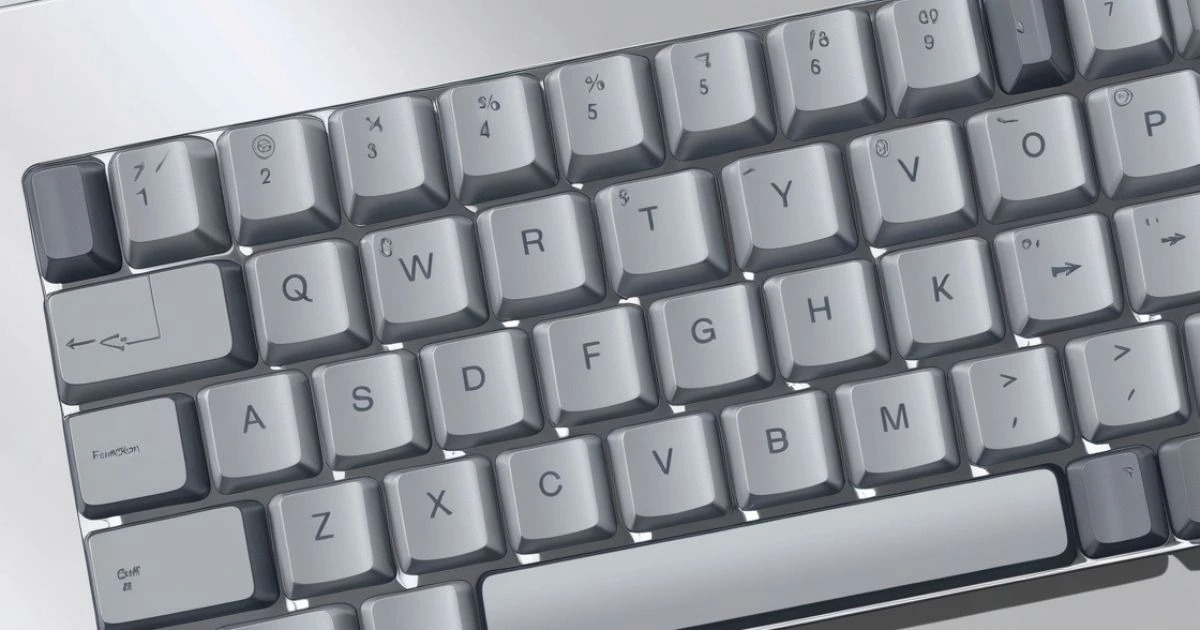The physical arrangement of the keyboard is called Layout of Keyboard in also how the key enter data in the system. Different types of keyboard layout are available in the market depending on region, language, and manufacturer.
A keyboard is an input device used to type text, issue commands, and interact with a computer or other electronic devices. It consists of a set of keys that represent letters, numbers, symbols, and functions. Here’s an overview:
Types of Keyboards
- Physical Keyboards:
- Standard Keyboards: Full-sized keyboards with all the keys, including function keys (F1-F12), a numeric keypad, and navigation keys.
- Compact Keyboards: Smaller keyboards without a numeric keypad.
- Mechanical Keyboards: Use physical switches for keys, providing tactile feedback.
- Membrane Keyboards: Use pressure pads that make them quieter and cheaper but with less tactile feedback.
- Virtual Keyboards:
- Displayed on a touchscreen, such as on smartphones, tablets, or kiosks.
- Specialized Keyboards:
- Ergonomic Keyboards: Designed to reduce strain on hands and wrists.
- Gaming Keyboards: Feature customizable keys and lighting for gamers.
- Foldable or Rollable Keyboards: Portable and flexible for travel.
Key Categories
- Alphanumeric Keys: Letters (A-Z), numbers (0-9), and common symbols.
- Function Keys: F1-F12 keys used for specific actions in programs.
- Navigation Keys: Arrow keys, Home, End, Page Up, Page Down.
- Control Keys: Ctrl, Alt, Shift, Esc, and Windows/Command keys.
- Special Keys: Enter, Spacebar, Backspace, Delete, and Tab.
Connectivity
- Wired Keyboards: Connect via USB or PS/2.
- Wireless Keyboards: Use Bluetooth or radio frequencies.
Keyboards are integral to interacting with most modern devices, from desktop computers to smart TVs, enabling users to communicate and control functions.
The layout of the keyboard is depending on the language, personal preference and region. Here we are describe some important keyboard layout.
QWERTY:
English speaking countries most widely used this type of layout. Named after the first six letters on the top row of the keyboard. Most default usage of keyboard in USA and UK this types of Keyboard.
AZERTY:
This types of keyboard layout is used in mostly France and French speaking regions. In this layout change the position of certain letters and symbols of keys as Compared to QWERTY.
QWERTZ:
Mainly used this category in Germany and Central Europe, this type keyboard as not different as compared to the QWERTY, just switches the “Y” and “Z” and some specials characters are included for German.
Dvorak:
This keyboard layout is designed for English Speakers to reduce finger movement and improve typing speed and ergonomics. It’s not much used but some typist are used only the specific or certain requirements for maintain the efficiency.
Colemak:
This modern type of keyboard design for improve the typing speed and reduce strain as compared to the QWERTY. This is most similar to QWERTY but different to the Dvorak, making for take the easier environment for QWERTY typists.
JIS:
JIS stand for Japanese Industrial Standard, this design special for Japan Industry which includes additional keys and characters for japan language.
ANSI and ISO:
These are refer with the physical keyboard layout rather than the arrangement of characters. ANSI (American National Standards Institute) is common in USA UK, while ISO (International Organization for Standardization) is Popular in Europe. In ISO have extra key for the next to left shift.
Custom Layouts:
Some of the programmer use some specific keyboard for their programming languages. Many of the operating system allow you to set up or download custom layout as you want.
Physical layout is the actual positioning of keys on a keyboard. Visual layout is the arrangement of the legends (labels, markings, engravings) that appear on those keys. Functional layout is the arrangement of the key-meaning association or keyboard mapping, determined in software, of all the keys of a keyboard; it is this (rather than the legends) that determines the actual response to a key press.
Conclusion
Modern computer keyboards are designed to send a scan code to the operating system (OS) when a key is pressed or released. This code reports only the key’s row and column, not the specific character engraved on that key. The OS converts the scancode into a specific binary character code using a “scancode to character” conversion table, called the keyboard mapping table. (Social media ok)
This means that a physical keyboard may be dynamically mapped to any layout without switching hardware components—merely by changing the software that interprets the keystrokes. Often, a user can change keyboard mapping in system settings. In addition, software may be available to modify or extend keyboard functionality.
Thus the symbol shown on the physical key-top need not be the same as appears on the screen or goes into a document being typed. Modern USB keyboards are Plug and play; they communicate their (default) visual layout to the OS when connected (though the user is still able to reset this at will).

